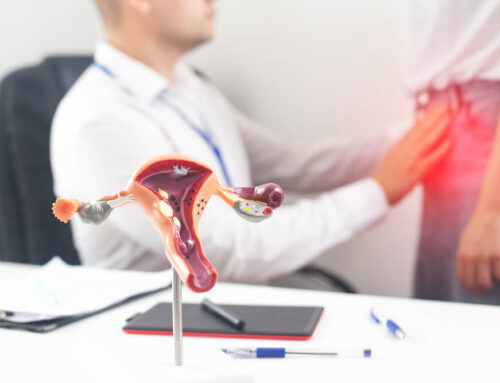The imaging procedure which gives your chosen doctor an insight into the health of your uterus is called a sonohysterogram. It is a very common procedure because of its simplicity, safety, and the fact that it is almost painless. Services of gynecology care in Boca Raton & Boynton encompass a wide variety of different procedures and exams, so when looking to schedule a sonohysterogram procedure, make sure you choose experienced medical care providers.
Simply put, a sonohysterogram is a specific uterus ultrasound that allows the doctor to look inside your uterus and capture different tissues, shapes, and structures, which helps with diagnosing certain conditions. The uterus gets filled with a saline solution, which helps identify problem areas within the uterus and its lining, which might be causing you different issues such as pain in the pelvis, bleeding, and even infertility. Another name for this type of ultrasound is the SIS procedure.
Choosing an expert to perform your saline sonogram is very important because their diagnosis and recommendations can be crucial to your healing process. That said, it is advised that you do proper research and choose a verified, trusted team, and the Women’s Health Partners professional team might be a great starting point.
Sonohysterogram Procedure 101

As with any other procedure, there are some important facts you should be aware of before deliberating on scheduling the SIS procedure. So, let’s start:
- The best time for performing a uterus ultrasound is before your ovulation and after your monthly period, from the sixth to the eleventh day of your menstrual cycle. This is an ideal time because the uterine lining is the thinnest at this point and can be clearly visible. If you have hit menopause, you can schedule the sonohysterogram procedure whenever possible.
- There are only two exceptions when it comes to the question of who should not get SIS procedure, and those include pregnant women and patients suffering from pelvic inflammatory disease.
- If you are wondering about the potential signs and reasons that may indicate you could need this ultrasound, note the following:
- Sonography gives a more detailed view of the inside of the uterus than other procedure
- Heavy periods
- Long-lasting periods
- Vaginal bleeding between two periods
- Consistent pelvic pain
- Multiple miscarriages
- Inability to get pregnant
- Uterus ultrasound can discover polyps, fibroids, oddly shaped uterus, endometriosis symptoms, endometrial cancer signs, issues with fallopian tubes, etc.
- By using a sonohysterogram, your chosen medical provider can give a proper diagnosis, further monitor your condition, and prepare you for potential surgery to remove problematic tissue from your uterus.
- The saline sonogram can be performed by different specialists, where the ultrasound technician takes the images. A physician often does the procedure and interprets the results to write a medical report.
What to Expect During a Sonohysterogram?
In order to get you as prepared as possible and help you with any pre-procedure anxiety, we are bringing you a detailed description of the procedure itself, how to prepare, and what happens after the SIS procedure.
The sonohysterogram procedure is very similar to a vaginal ultrasound, except that a saline solution is injected into the uterus slowly during the imaging process. Much like a transvaginal ultrasound, the doctor inserts a transducer through the vagina and the cervix into the uterus. The sound waves the wand produces capture information displayed on a screen so that both you and the doctor/technician can see the image.
Before the SIS procedure, your doctor must approve it, and these are some of the criteria they look at:
- The patient cannot be pregnant, so a pregnancy test is taken before the procedure.
- The patient cannot suffer from an infection, so a pelvic examination is most often done to ensure that the person is in good health.
- If the patient is suffering from cases of irregular bleeding, the doctor usually prescribes medication to stop the bleeding, so they can get a clear image.
When it comes to preparatory steps, they are pretty simple:
- You can eat and drink, as well as take medication, as per usual.
- Try to dress comfortably so that you can take off your clothes easily if needed.
- Take some pain medication to prevent discomfort if your pain threshold is low.
- Bring a hygienic menstrual pad with you to use in case of any vaginal discharge after the procedure.
The uterus ultrasound takes around 30 minutes of your time. There might be some minor cramping and mild discomfort during the procedure, but it is mostly a pain-free and bearable experience compared to some other gynecological procedures.
The doctor will ask you to empty your bladder and get a pregnancy test sample. After that, the sonohysterogram itself is done in three phases. The first phase is the regular transvaginal or transabdominal ultrasound, where the patient lies on the table and the medical provider inserts a transducer wand into the vagina to record images of the uterus.
After the first phase, the saline solution is added using a speculum to access the cervix more efficiently, which is cleaned, and the saline is injected through a catheter into the uterine cavity. This is the moment where cramping sometimes begins, but painkillers can help in this situation significantly. After this, a transvaginal ultrasound is done again, where the wand is reinserted, and the imaging process is repeated. The fluid helps the ultrasound capture more detailed images, making the results more accurate.
When the main part is done, and your medical provider has all the information they need, you are free to go home. You can return to your everyday routine right after the SIS procedure, but some issues might occur afterward. Please note that they are mostly harmless, but contact your doctor immediately if they intensify and do not stop shortly.
- Vaginal discharge, which is mostly watery and lasts for a few hours after the procedure. This is the saline solution exiting your system.
- Mild cramps and pain, but this can be stopped with some pain-relieving medicine.
- Spotting over a few days (red or brown), which most often occurs if the tissue gets irritated during the procedure.
Risks

As mentioned in the beginning, this procedure is very popular because it includes minimal risks and is mostly pain-free. The potential side effects include discomfort and mild pain. There is a slight chance of an infection, but the medical provider should make sure this does not occur.
If you start experiencing severe pain, fever, or problematic vaginal discharge, please call your doctor and schedule a consultation as soon as possible.
Choose Health!
Sonohysterogram, however safe and painless it might be, is a gynecological procedure that is not comfortable for the majority of women. In order to make our patients feel as relaxed and calm as possible, our clinic has an expert team and first-class equipment for procedures like these, so call us and schedule your appointment right away. Choose health; choose Women’s Health Partners!





